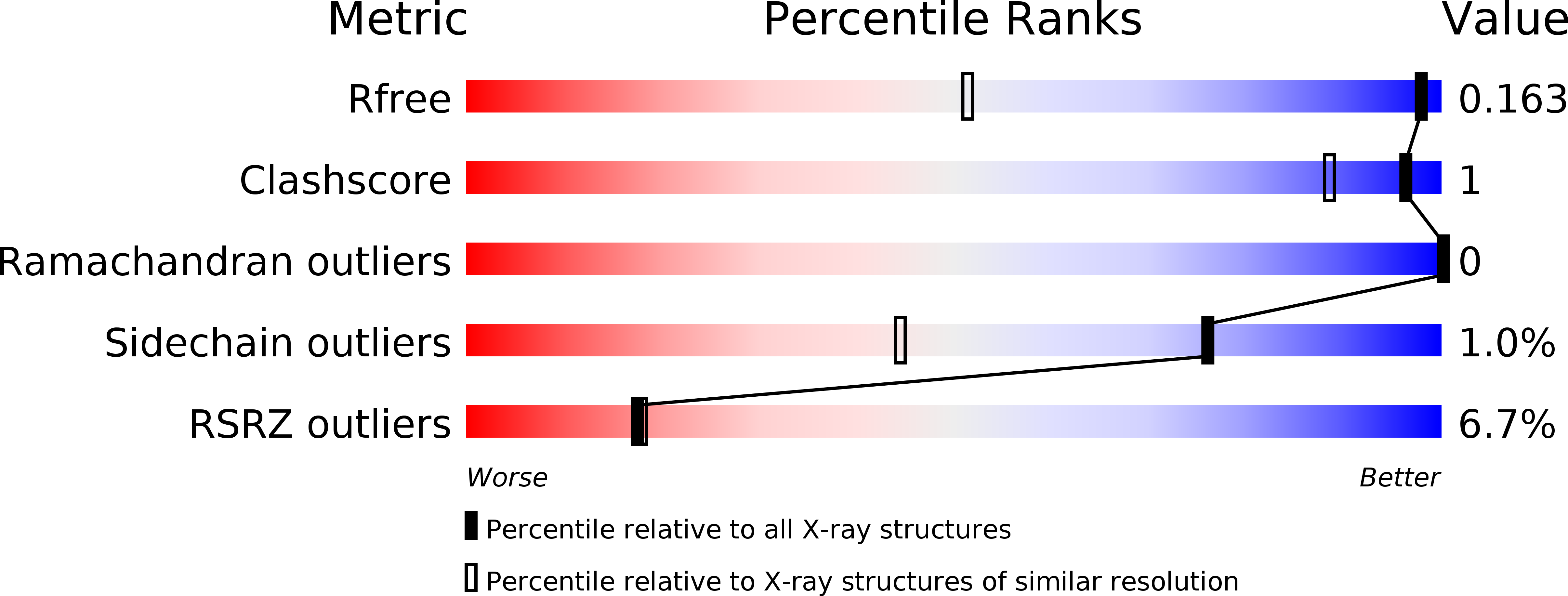Two novel fish paralogs provide insights into the Rid family of imine deaminases active in pre-empting enamine/imine metabolic damage.
Digiovanni, S., Visentin, C., Degani, G., Barbiroli, A., Chiara, M., Regazzoni, L., Di Pisa, F., Borchert, A.J., Downs, D.M., Ricagno, S., Vanoni, M.A., Popolo, L.(2020) Sci Rep 10: 10135-10135
- PubMed: 32576850
- DOI: https://doi.org/10.1038/s41598-020-66663-w
- Primary Citation of Related Structures:
6TCC, 6TCD - PubMed Abstract:
Reactive Intermediate Deaminase (Rid) protein superfamily includes eight families among which the RidA is conserved in all domains of life. RidA proteins accelerate the deamination of the reactive 2-aminoacrylate (2AA), an enamine produced by some pyridoxal phosphate (PLP)-dependent enzymes. 2AA accumulation inhibits target enzymes with a detrimental impact on fitness. As a consequence of whole genome duplication, teleost fish have two ridA paralogs, while other extant vertebrates contain a single-copy gene. We investigated the biochemical properties of the products of two paralogs, identified in Salmo salar. Ss RidA-1 and Ss RidA-2 complemented the growth defect of a Salmonella enterica ridA mutant, an in vivo model of 2AA stress. In vitro, both proteins hydrolyzed 2-imino acids (IA) to keto-acids and ammonia. Ss RidA-1 was active on IA derived from nonpolar amino acids and poorly active or inactive on IA derived from other amino acids tested. In contrast, Ss RidA-2 had a generally low catalytic efficiency, but showed a relatively higher activity with IA derived from L-Glu and aromatic amino acids. The crystal structures of Ss RidA-1 and Ss RidA-2 provided hints of the remarkably different conformational stability and substrate specificity. Overall, Ss RidA-1 is similar to the mammalian orthologs whereas Ss RidA-2 displays unique properties likely generated by functional specialization of a duplicated ancestral gene.
Organizational Affiliation:
Department of Biosciences, University of Milan, Milan, Italy.

















